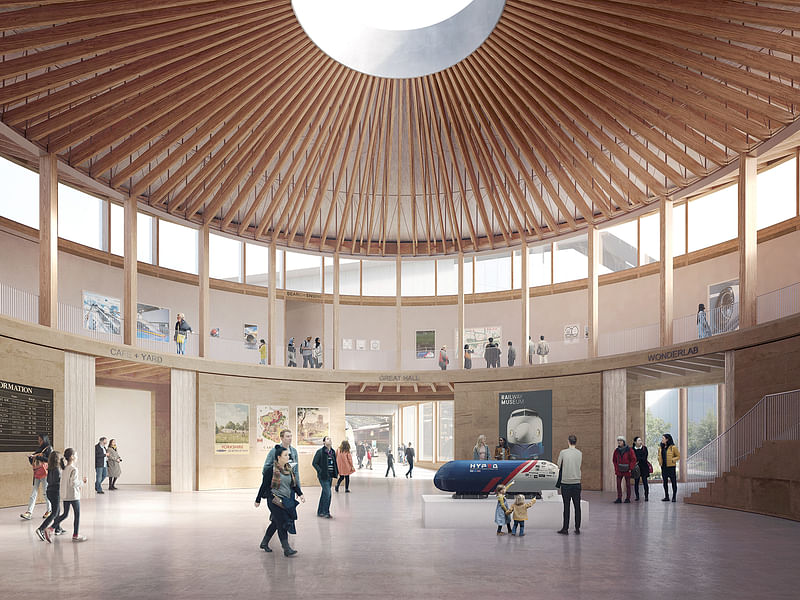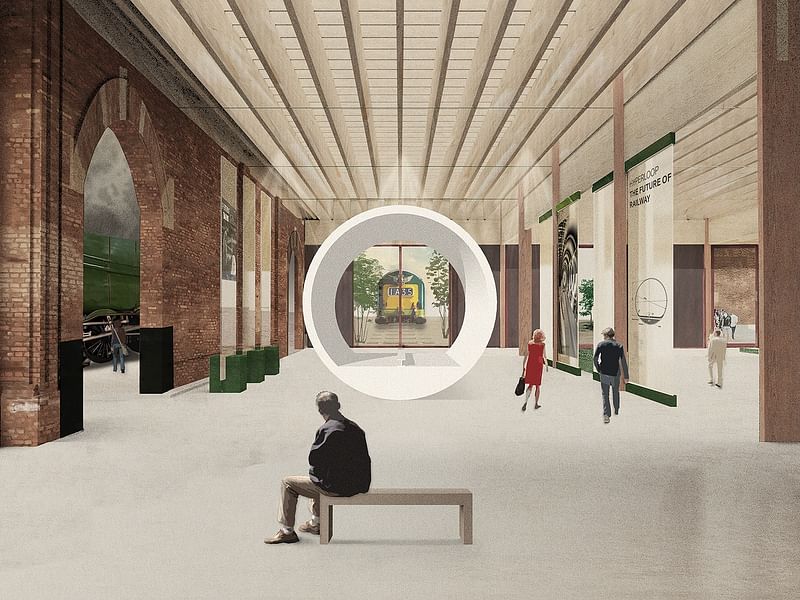
Feilden Fowles wins National Railway Museum Central Hall competition
By Justine Testado|
Thursday, Mar 26, 2020
Related
Out of five shortlisted teams, the one led by London-based Feilden Fowles was announced today as the winner of the National Railway Museum Central Hall competition. As part of the York Central redevelopment, the new 4,500-square-meter Central Hall will function as a welcoming space for visitors and bridge the space between the museum's Great Hall and Station Hall.
The jury praised Feilden Fowles' proposal for its sensitivity to the site's railway heritage and history, which is elegantly balanced with a contemporary museum aesthetic. The proposal was also popular with the public, who had the opportunity to view the finalist schemes in a free exhibition and online gallery.

Feilden Fowles looked to the site's history of locomotive roundhouses and railway turntables, as seen by the two-story rotunda in their design concept. As the centerpiece of the design, the rotunda is clad with recycled patinated copper and lit with high clerestory glazing, which illuminates the structure in such a way that will attract visitors and the surrounding city.
The visitor's gaze will be drawn upwards to an engineered ceiling pieced together with radials of Douglas Fir sourced from the UK. A first-floor balcony offers views of York. At ground level, five different portals will lead visitors to different parts of the museum. The new Exhibition Hall is a spacious double-height gallery that will share the same grid as the existing Station Hall.

The proposal emphasizes a low-tech approach and lowering the project's overall carbon footprint. Their design uses a low-carbon timber-frame structure to reduce their need for concrete and steel. The design also employs a mix of passive design principles and active systems to reduce the entire site's operational carbon footprint by 80 percent, as well as incorporating fully recycled copper and local York stone, which the jury praised as an ambitious energy strategy. The team also proposed further enhancements to adjoining museum buildings to make the overall ensemble more harmonious and inviting.
Feilden Fowles developed their concept with Max Fordham as Building Services Engineers and Price & Myers as Structural and Civil Engineers.



Share
0 Comments
Comment as :